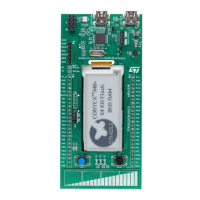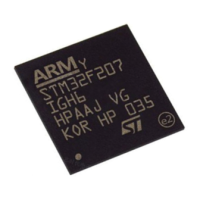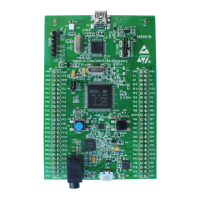The STM32 Cortex-M0 instruction set PM0215
38/91 Doc ID 022979 Rev 1
LSL
Logical shift left by
n
bits moves the right-hand
32
-
n
bits of the register
Rm
, to the left by
n
places, into the left-hand
32
-
n
bits of the result. And it sets the right-hand
n
bits of the result
to 0 (see Figure 12: LSL#3 on page 38).
You can use the LSL #n operation to multiply the value in the register
Rm
by 2
n
, if the value
is regarded as an unsigned integer or a two’s complement signed integer. Overflow can
occur without warning.
When the instruction is
LSLS
or when
LSL #n
, with non-zero
n
, is used in
operand2
with the
instructions MOVS, MVNS, ANDS, ORRS, ORNS, EORS, BICS, TEQ or TST, the carry flag
is updated to the last bit shifted out, bit[
32
-
n
], of the register
Rm
. These instructions do not
affect the carry flag when used with LSL #0.
Note: 1 If
n
is 32 or more, then all the bits in the result are cleared to 0.
2If
n
is 33 or more and the carry flag is updated, it is updated to 0.
Figure 12. LSL#3
ROR
Rotate right by
n
bits moves the left-hand
32
-
n
bits of the register
Rm
, to the right by
n
places,
into the right-hand
32
-
n
bits of the result. It also moves the right-hand
n
bits of the register
into the left-hand
n
bits of the result (see Figure 13).
When the instruction is RORS, the carry flag is updated to the last bit rotation, bit[
n
-1], of the
register
Rm
.
Note: 1 If
n
is 32, then the value of the result is same as the value in
Rm
, and if the carry flag is
updated, it is updated to bit[31] of
Rm
.
2
ROR
with shift length,
n
, more than 32 is the same as
ROR
with shift length
n
-32.
Figure 13. ROR #3

